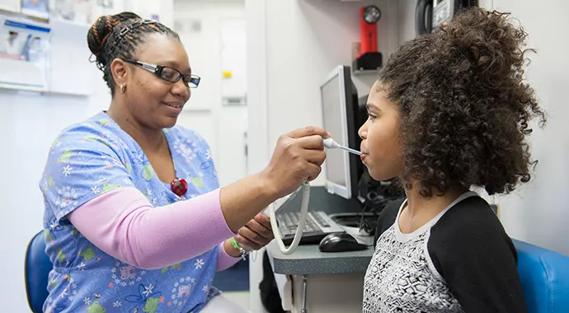Advertisement
Early recognition, intervention can avert complications

Pediatric liver diseases typically produce no symptoms in their early stages, making timely diagnosis a challenge.
Advertisement
Cleveland Clinic is a non-profit academic medical center. Advertising on our site helps support our mission. We do not endorse non-Cleveland Clinic products or services. Policy
“These diseases can be silent for years before causing serious complications,” says pediatric hepatologist Naim Alkhouri, MD, who directs Cleveland Clinic Children’s Metabolic Liver Disease Clinic.
The specialized clinic offers a comprehensive approach to help expedite recognition and management of these silent but sinister conditions, be they acquired disorders — including nonalcoholic fatty liver disease (NAFLD) and hepatitis B and C — or genetic diseases, such as Wilson disease, alpha-1 antitrypsin deficiency or hemochromatosis.
Suspicion should be based on the presence of obesity or associated comorbidities, such as insulin resistance, type 2 diabetes, polycystic ovary syndrome or a family history of liver disease.
Additionally, elevated ALT and AST, hepatomegaly, splenomegaly, jaundice or failure to thrive should prompt referral to a specialized program like the Metabolic Liver Disease Clinic for a thorough examination and complete biochemical profile.
Confirmation of the diagnosis may require liver enzyme testing, liver ultrasound or biopsy.
Families typically spend less than two hours in the initial evaluation. Follow-up visits are scheduled every month or two during the first year, then as needed.
At every visit, the patient sees a pediatric hepatologist and a registered dietitian. An appointment may be made for the child to also see an exercise physiologist or pediatric psychologist. Whenever possible, the visits are accomplished on the same day.
When an associated medical condition is present, the child may be referred to pediatric endocrinology, nephrology, cardiology or sleep medicine — or even for liver transplant evaluation.
Treatment of the liver disease may involve medications, lifestyle changes or both.
“Our dietitian plays a key role, because NAFLD is the result of obesity,” says Dr. Alkhouri. “Other liver diseases can cause malnourishment or vitamin deficiency.” The dietitian also helps families plan healthy meals and snacks.
“By intervening early, we can often reverse the course and help the patient avoid consequences — which, in the case of NAFLD, may include liver transplantation,” Dr. Alkhouri adds.
The concentration of pediatric liver disease patients in a single multidisciplinary program has enabled the team to investigate ways to make the diagnostic process more child-friendly.
Recent research has focused on finding potential biomarkers for NAFLD and its severe form, nonalcoholic steatohepatitis. “Identifying a biomarker that successfully predicts the degree of liver damage will help us avoid the need for biopsy,” says Dr. Alkhouri.
The team is also looking at markers of liver disease in the breath, with the hope that changes in volatile organic compounds as measured by mass spectrometry may replace the need for blood work and liver biopsy.
Advertisement
Advertisement

Pediatricians can play valuable role in recommending substitutions for unhealthy foods

From integrative med to school-based care, inventive approaches promise progress

New center focuses on treating the whole child — body, mind and spirit

Specialists in the growing specialty are well-positioned to foster seamless, high-value care

Research aims to uncover the mechanisms involved in immune tolerance

Science advisory examines challenges, ethical considerations and future directions

Case highlights the benefits of a minimally invasive approach

Large registry study explores association between statin use and long-term outcomes